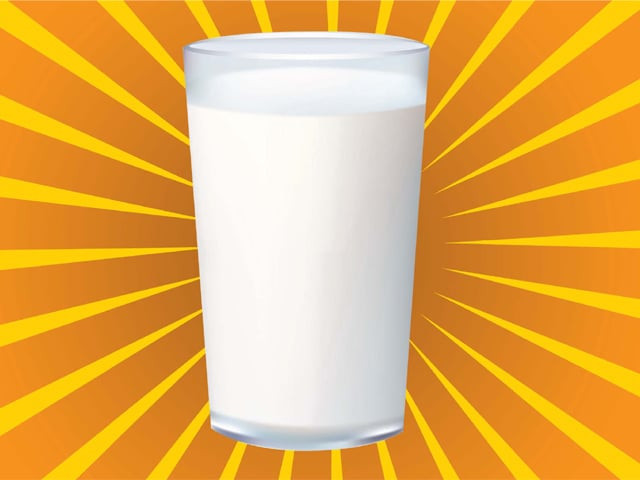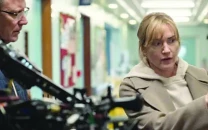A milky way to a stronger you
Osteoporosis is a disease that softens bones but is not diagnosed till a victim is tested for unrelated injuries.

Sanila Rashid, a 37-year-old housewife was recently diagnosed with osteoporosis; a disease that makes one vulnerable to fractures when the bones become spongy due to lack of calcium in the body. With no apparent symptoms, the disease silently and painlessly softens all the bones in the body and it is not until the victim starts getting fractures over minor everyday falls that it is diagnosed.
Rashid tells The Express Tribune that she was diagnosed with the disease when doctors tested her for osteoporosis after she slipped on the floor and fractured her hip bone. It was then that she learnt about the disease, the dietary disorders making her bones porous and the reason for which her mother called milk a wonder drink. “For 15 years after I got married I followed a strict diet, which did not include any dairy product especially milk. According to my physician, this is one of the major reasons that my bones gave up way before time,” she explains referring to the general perception among people that softening of bones is an ageing process.
Osteoporosis: a disease or an ageing process?
Dr Akhtar Ahmad, President Osteoporosis Society of Pakistan contradicts the general concept that osteoporosis is an age related disease. He says that it is not necessary that every old person will develop the disease as bones may get porous for varying reasons. He continues that the disease is preventable if diagnosed early.
While identifying people who may be at a higher risk of developing osteoporosis, Ahmad suggests women reaching post menopausal age, people who are on steroids, anti-depressants or thyroid medicines and people who suffer from kidney diseases, are diabetic or have a family history of osteoporosis “to see a physician regularly so as to avoid it.” Besides these people, he advises women in general to be on their guard against this disease of bones. “One woman out of every three women develops osteoporosis as compared to one man out of every five men,” he highlights.
Why women?
Dr Samrina Hashmi, a gynaecologist explains that in women a hormone estrogen serves as a protective cover to bones. As women reach the postmenopausal stage, the production of estrogen ends and the bones start losing bone mass (mainly calcium and phosphorous) and become vulnerable to osteoporosis. To minimise the risks of breaking bones, a woman should start storing calcium in her body by taking food rich in calcium and vitamin D since childhood. “The more she stores calcium in the body, the lesser are the risks of developing osteoporosis,” Hashmi says.
Hashmi, therefore, suggests that a girl child specifically be provided with cheese, fish, yoghurt and leafy vegetables frequently and “at least two glasses of milk daily till she turns 35,” in order to help her store calcium for lifetime.
Milk doesn’t help after teenage: a myth or reality?
“Khana pina sirf teens main hi lagta hai (food works on human body only till teen years),” believe Humaira Aleem and Batool Ezam in their 40s and 20s respectively. Both women used to rely on milk as a primary source for calcium till their teens. They quit milk afterwards for they have always heard that a human body stops responding to natural sources of mineral and vitamins after 20s.
On the other hand, Hashmi regards it a misconception and claims that dairy products can help woman store calcium in her body till they turn 35 and even after that it helps coping with the gradual loss of calcium.
However, she recommends that “the layer of cream in dairy milk shall not be removed. It is rich in vitamin D, without which calcium cannot be processed and the milk fails to serve the purpose therefore.”
It seems like women prefer a spine fracture to putting on weight by drinking creamy milk. Hashmi suggests that skimmed milk, a decent exposure to sunlight and a 40 minute brisk walk every day cuts down fats and helps to cope with the deficiency of vitamin D. She further suggests women who are undergoing an oophorectomy (surgical removal of ovaries), to consult their gynaecologists and get Hormone Replacement Therapy (HRT) done, which helps one cope with the sudden and early end to the production of estrogen. If recommended, continues Hashmi, the HRT may protect women from an early osteoporosis.
Published in The Express Tribune, October 17th, 2010.



















COMMENTS
Comments are moderated and generally will be posted if they are on-topic and not abusive.
For more information, please see our Comments FAQ